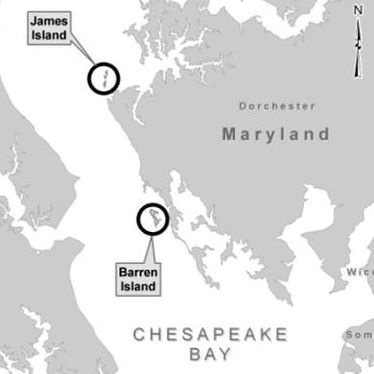
The U.S. Army Corps of Engineers (USACE), Baltimore District, and the Maryland Department of Transportation (MDOT) recently signed a Project Partnership Agreement (PPA) for the $4 billion Mid-Chesapeake Bay ecosystem restoration project.
The PPA outlines the roles, responsibilities, and financial obligations for both partners for the restoration of both James and Barren islands in Dorchester County, beneficially re-using material dredged from the Port of Baltimore approach channels and the Honga River, respectively.
The first contract for phase one on Barren Island is anticipated for award in the coming weeks.
Every year, USACE dredges nearly five million cubic yards of material from the channels and anchorages serving the Port of Baltimore to maintain current depths and widths for safe navigation.
Once the material is removed, it must be contained or disposed of in an environmentally conscious manner.
The Mid-Bay project includes restoration of 2,072 acres of lost remote island habitat on James Island and 72 acres of remote island habitat on Barren Island. Habitat may include submerged aquatic vegetation, mudflat, low marsh, high marsh, islands, ponds, channels, and upland areas.
USACE received more than $80 million in funding from the Bipartisan Infrastructure Law to complete the design and preconstruction activities for this project, to include the first construction contract award.
Based on the current schedule, Barren Island may start to accept dredged material as early as 2024 with James Island accepting in approximately 2030, after sill and dike construction efforts to hold the material are completed at each location.
The Mid-Bay project is anticipated to be completed in 2067 – providing more than 40 years of capacity to place almost 100 million cubic yards of dredged material.
Poplar Island, the ongoing ecosystem restoration project by USACE and MDOT MPA, wrapped up construction of an expansion effort in January 2021. The expansion provides substantial ecosystem benefits and additional dredge material capacity for the approach channels to the Port of Baltimore until 2032.
source: U.S. Army Corps of Engineers (USACE), Baltimore District
Leave a Reply
You must be logged in to post a comment.